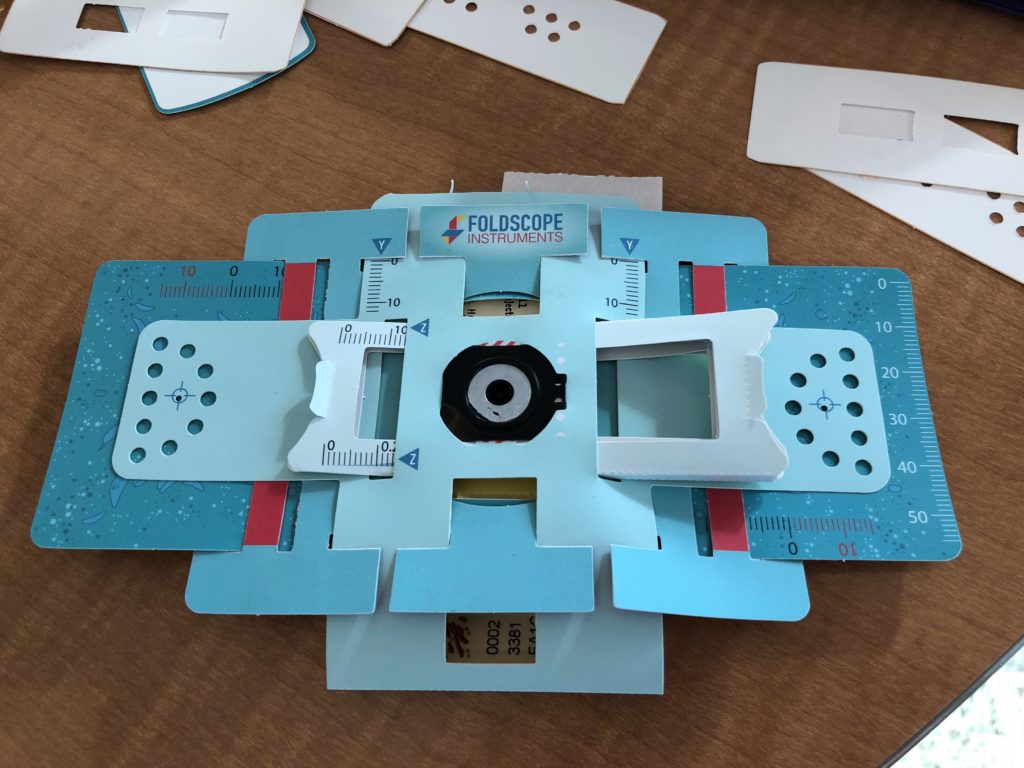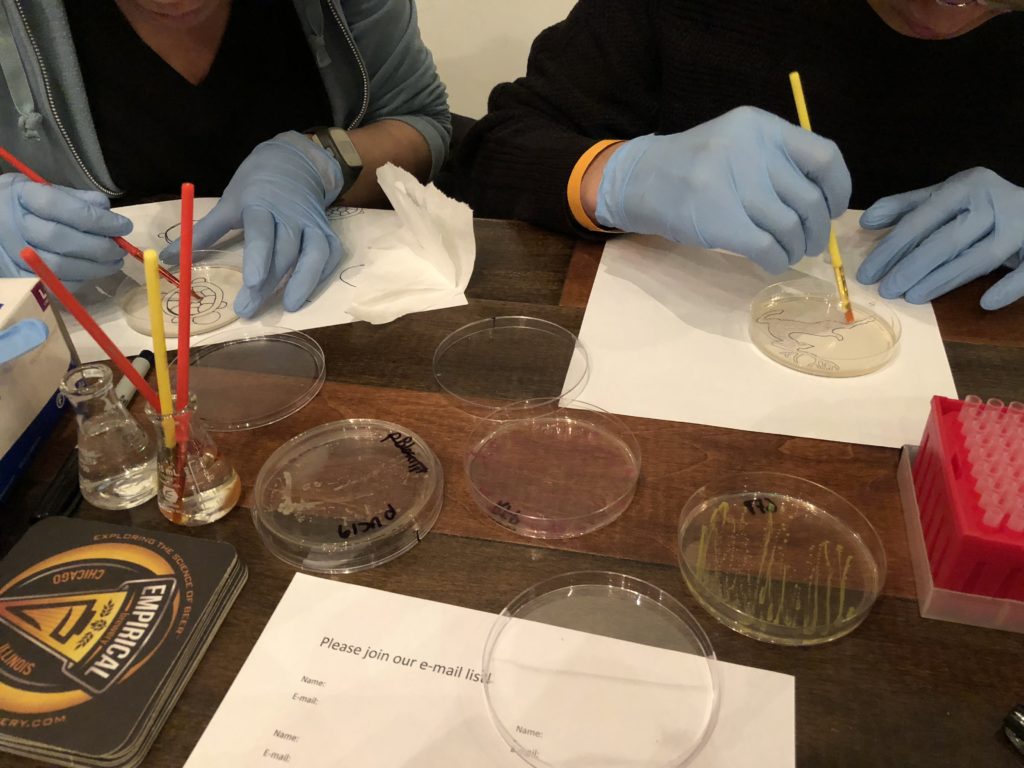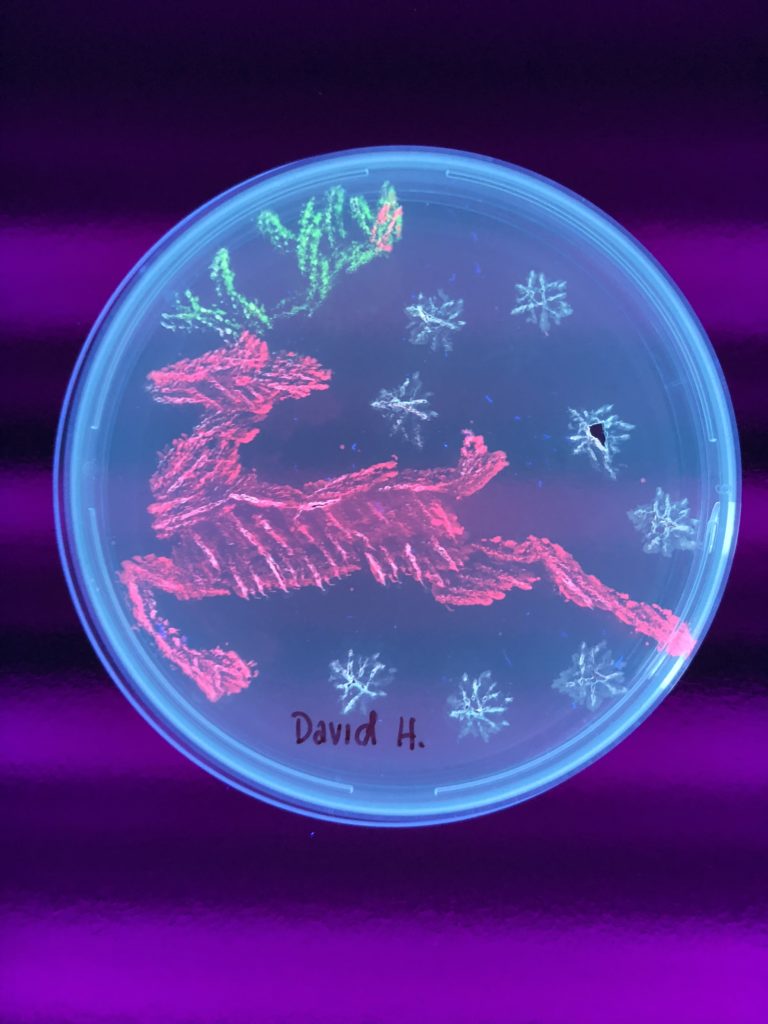A huge thanks to everyone who came out to our end-of-year meeting last night!

Thanks to Isaac we had a number of Foldscopes for ChiTown Biologists to peer into the microcosmos. For those who are unfamiliar, Foldscopes are a “paper origami” microscope that costs less than a dollar and offer magnification on par with the more traditional (and clunky) microscopes that cost hundreds of dollars or more. We also had a number of prepared slides (volvox, zea mays, planaria, etc.) and had a great time admiring the splendor of microorganisms!

We also had a few different bacterial cultures to paint with! Andy was kind enough to bring three strains of non-pathogenic E. coli, each carrying a different “biological program” on a circular piece of DNA called a plasmid.
- The first strain contained pUC19, a fairly common plasmid that contains a gene that allows the bacteria to become resistant to an antibiotic (ampicillin). Giving our bacteria antibiotic resistance allows us to ensure that only that bacteria we want grows on our petri dish, while all the rest (from our hands, the table, the air, etc.) perish. Without any additional genetic programming, these bacteria will appear as white colonies when grown on a plate/dish.
- The second strain contained the genetic information for Green Fluorescent Protein (GFP). GFP is the same protein found in jellyfish that allow it to “glow in the dark.” This genetic program was built into the pUC19 plasmid described above, so it also had antibiotic resistance. E. coli that produce GFP are visibly green and will fluoresce if exposed to the right wavelengths of light.
- The third strain contained a different fluorescent protein – RFP (R for red). Red fluorescent proteins were originally derived from Discosoma, a species of “mushroom anemone” with a pretty cool scientific name that people like to grow in aquariums. Similar to the other strains, this also contains a gene for antibiotic resistance. E. coli producing RFP appear red!
With these three strains in hand (red, green and white), we did some bacterial painting on petri dishes containing a nutrient-rich agar designed for growing E. coli. These petri dishes also contained antibiotic, so that only our three strains would survive and grow (otherwise our plates would be overrun with a variety of life forms). “Painting” followed a simple process of taking an ethanol-sterilized paintbrush, dabbing it onto one of the strains of E. coli, and then lightly dabbing or streaking on an agar plate. At the end of the night, one of our organizers took the plates and incubated them overnight at 37° C, E. coli‘s favorite temperature (also the temperature of it’s favorite hangout – your lower intestine). The next morning, the plates were placed on top of a UV lamp and the bacterial artwork came to artistic-life!

Check out our online album of Petri Paintings for more pictures of bacteriophages, snowflakes, snow people, etc.!
If you enjoyed this event, just wait to see what we have planned for our next one! Our next meeting will be held on January 18th, 2018. Same time (7 PM), same place (Empirical Brewery’s Taproom, 1801 W. Foster Ave.).